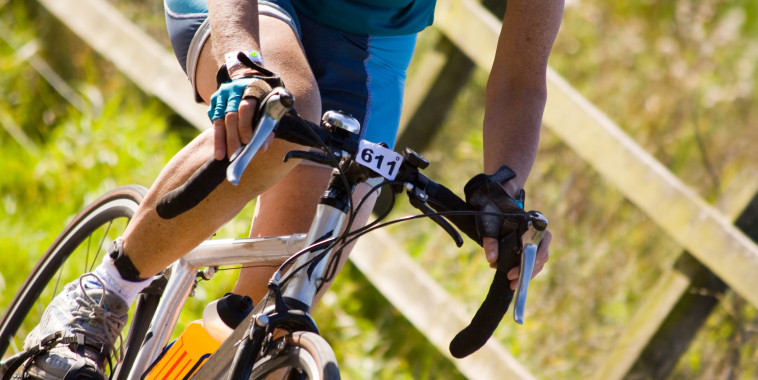Triathlons can be a grueling sport; taking substantial toll on the body. Here are 5 tips to better your performance while gearing up for your next triathlon.
Working Your Core
This is an absolute must if you are going to improve your performance. Core refers to the muscles deep in your back and abs attaching to the spine and pelvis. Core strength training is important because it is the center of your power; where motion originates and stability is maintained. Exercises such as sit-ups, hip raises and bicycle kicks are all effective in strengthening the core.
Stretching
Research has shown that athletes with greater flexibility and elasticity in their muscles perform more effectively and efficiently. We can dissect the event of triathlon itself in order to see the benefits. Let’s start with swimming, a flexible shoulder allows the hand to recover close to the body, thus permitting a full roll and a land stroke. An ankle capable of fully flattening out reduces the “drag effect”.
Running also improves as flexible quadriceps and hip flexors helps athletes by allowing the recovery leg to swing through a wider arc. Finally, during cycling, tight hamstrings limit your performance by restraining the leg during down stroke.
Quality Not Quantity
A mistake made by many athletes is focusing on the amount of work done during training, rather than the quality of work being done. During exercises the amount of reps are sometimes prioritized over the actual sets. Shorter reps done in each set are generally more effective and results are yielded much quicker with such methods. Don’t overkill your training, but train in modification and make it a quality workout.
Weekly Short Run
In Triathlons, there are really no short cut to success. In fact, if you don’t run then forget about a place on the podium. There are two types of runs: bike runs called “bricks” and transition runs known more casually as “short runs”. We’ll focus on the short runs, which is more specific to development.
Short runs are narrowly focused on preparing the athlete for the transition from running to riding. Weekly short runs will help increase the ability to run well after pedaling and also reduce the chance of injury. “Adding short runs off the bike is a great way to increase frequency without overloading the athlete from a musculoskeletal standpoint,” says Matt Dixon, whose roster of athletes includes 2009 Hawaii Ironman runner-up Chris Lieto. It’s quite simple short runs offer both explosive ability and running-specific fitness.
Rest
While training programs may differ among coaches, there is one fundamental principle most do agree on – consistency. You have to be able to repeat your training program with the same intensity on a weekly basis. This means that the body needs to recover properly, thus, rest plays a vital role in improving performance. Rest days within a training program enable you to maintain consistency, by allowing longer periods of recovery.
Although there are a plethora of ways to improve performance these five methods presented are quite effective. It is up to you to implement them as you see fit and ensure that you are disciplined enough to see them through. There is really no magic recipe to success but developing your own philosophy and merging establishing concepts is always the start of a watershed moment. Triathlons are an endurance specific event that requires a lot of talent and dedication.








